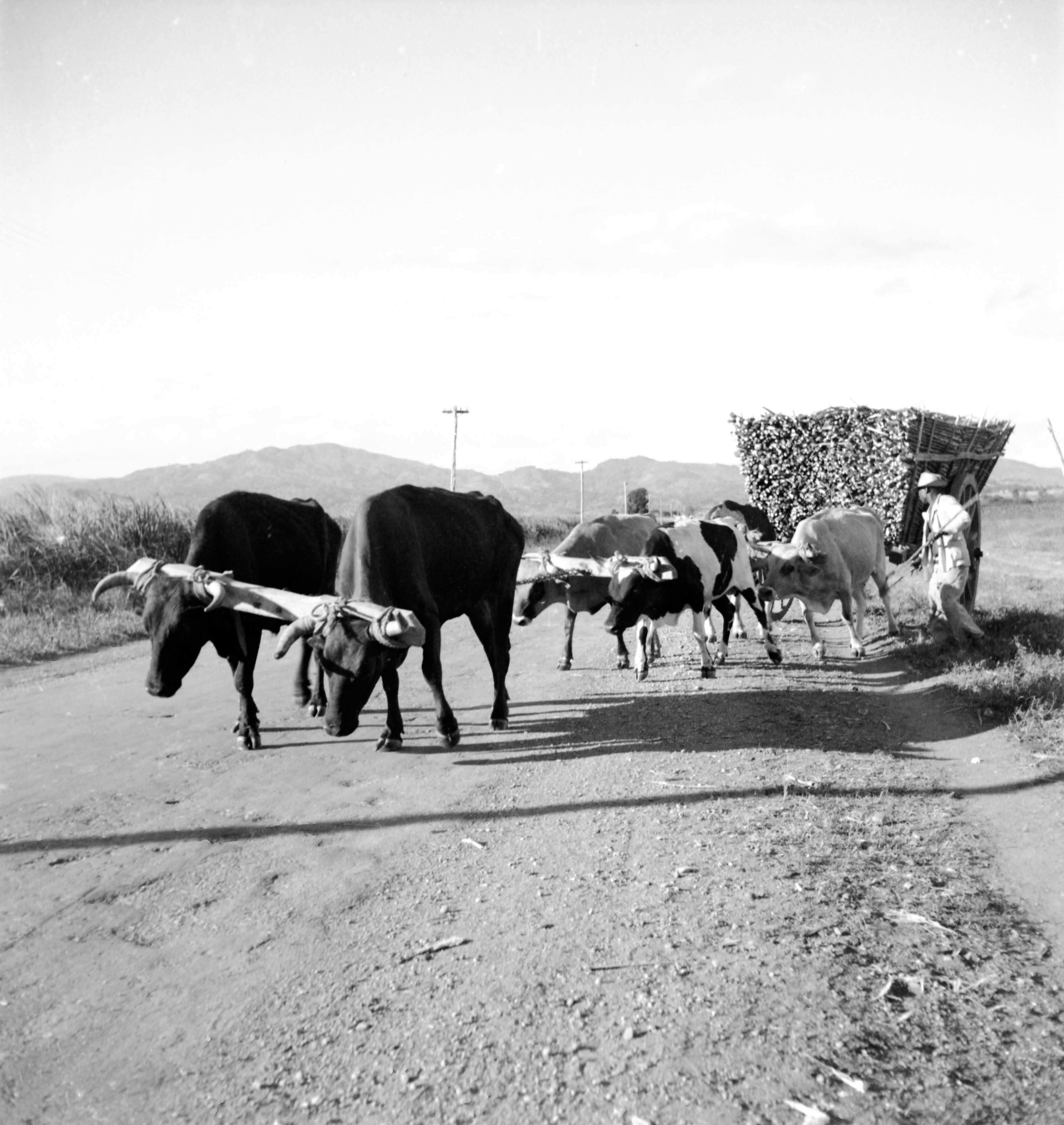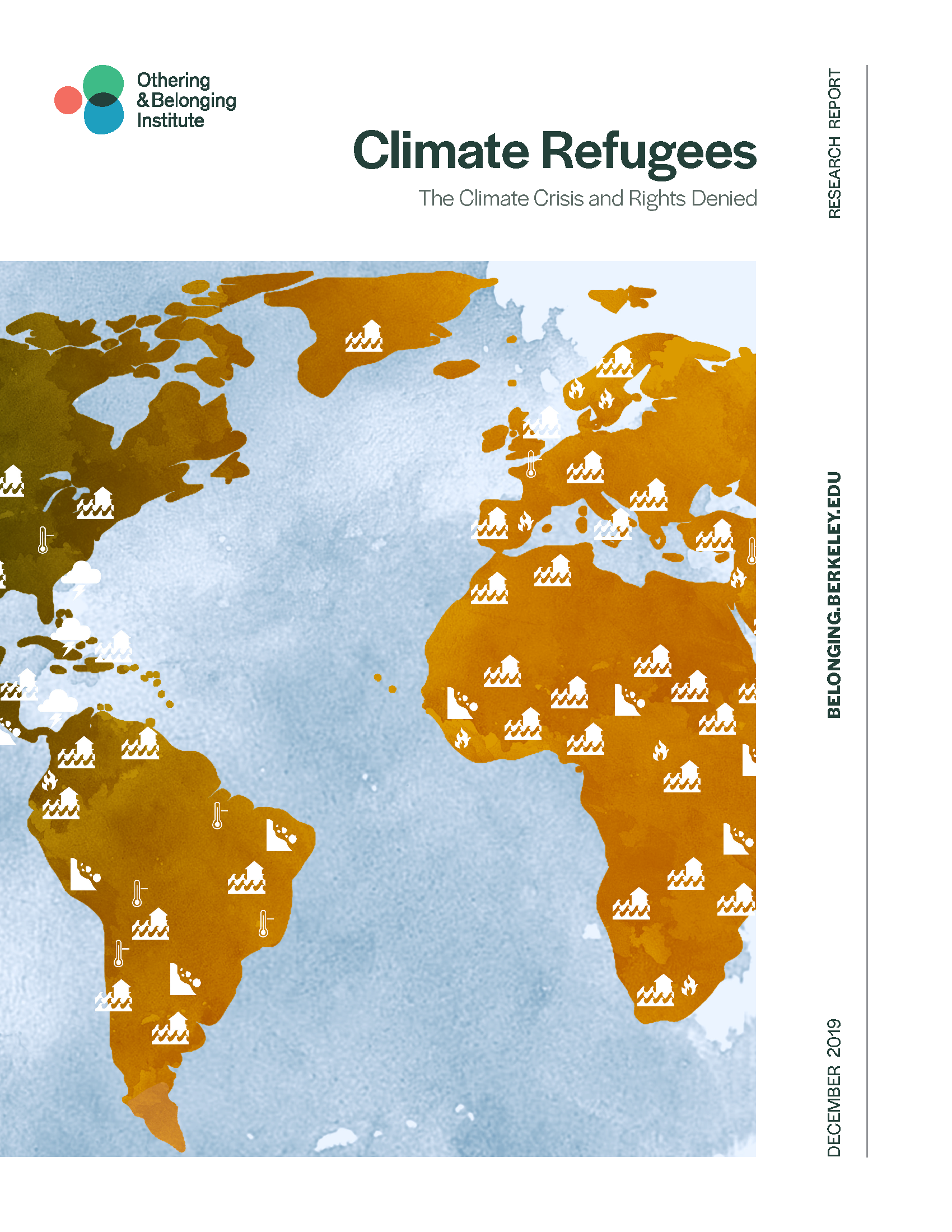
Cut sugar cane being transported by oxen. Archivo General de la Nación. From Sugar as Motive by Lizania Cruz
Climate-induced displacement underscores the othering & belonging implications of climate change. Who is already displaced? Who will be? Who is responsible for their displacement? Who (or what) will be allowed to cross borders? Who will host them? Who will have the resources to return home? And what institutions, practices, and ideas shape how we come to ask these questions and offer answers?
Othering & Belonging Institute (OBI) releases the report Climate Refugees: The Climate Crisis and Rights Denied
OBI convenes six experienced artists: Alia Farid, Eli Jacobs-Fantauzzi, Jayeesha Dutta, Lizania Cruz, puck lo, Storyline (Michael Premo & Rachel Falcone)
Monthly conversations & guest speakers focused on climate displacement: Elsadig Elsheikh, Hamza Hamouchene, Yumna Kamel
Public Offerings & Website of key learnings, questions and outcomes
Catalyst Projects
Contributing to the Othering & Belonging Institute’s efforts to answer these questions from a multitude of standpoints, we convened a cohort of six artists whose work grapples with displacement, migration and/or our impending climate catastrophe and the endless forms of environmental injustice that are endured by disparate populations all over the world due to ever-increasing climate pressures. Over six months, we met as artists. We shared our work, critiques, stories, and produced new work. In the process, we generated new understandings, questions and approaches to making art and telling stories that can address the complexity of climate displacement. We dug into the many creative forms of survival and worldmaking - methods, ethics and principles - we are witnessing across various communities that have been impacted by the climate crisis. As we answered some of the questions with which we entered the conversation, new and more nuanced ones unfolded. Some of them will require more research. Some have no easy answer. We decided to create this website in order to reflect our iterative process rather than presenting a final report. Here, we chronicle these conversations, communicate our learnings, and invite other artists, researchers and organizers who share our interest in addressing the complex challenges - direct and indirect - presented by climate displacement.
Here, we chronicle these conversations, communicate our learnings, and invite other artists, researchers and organizers who share our interest in addressing the complex challenges - direct and indirect - presented by climate displacement.

In launching this project, we were guided by the Othering & Belonging Institute’s report on Climate Refugees. According to Ayazi and Elsheikh, "climate-induced displacement describes the phenomenon whereby individuals and communities are forcibly displaced (within or beyond their nation-state boundaries) by short- and long-term natural disasters that are precipitated or exacerbated by the climate crisis. Short-term disasters consist of typhoons, hurricanes, wildfires, and tsunamis, while long-term natural disasters include desertification, deforestation, rising temperatures, and rising sea levels, among others."
Although there are many forces that are the root of this unprecedented phenomenon, the economic, social, cultural and political dynamics encountered by those displaced tend to be less nuanced. These include an increasingly fearful and exclusionary global north responding to expanding populism and neoliberal ideologies that privilege border security, eco-fascism, and anti-immigrant sentiments over human rights, social justice, and diversity. And, while significantly less newsworthy, these highly contested political trends across the developed world are accompanied by invisible partnerships with a new generation of Global Southern elites that are both contributing to and reaping the benefits of the economic inequities leading to these waves of forced migrations.
The work of socially-engaged artists and storytellers is invaluable. From the prison industrial complex to queer liberation, that which may seem inarguable today (or at least has gained a degree of mainstream acceptance) was shrouded in obscurity and suppression before it was brought to light by a number of daring organizers, artists, investigators, journalists and storytellers. The same rings true for causes, consequences, and experiences of climate displacement. We are well aware that it will require far more than six artists to reach mainstream narratives. This is why we are encouraged to meet and collaborate with a significant number of think tanks, policy, environmental justice, and other organizations working on this issue from multiple angles, scales, and geographies to nurture a climate-displacement narrative, rooted in belonging, into the mainstream. What we know from our Circle is that this will be more fractal than diamond; it will require a plentitude of nuanced stories, an increasing diversity of storytelling forms and a shift to more democratic processes.
While our primary emphasis was on the dialogue that took place within the Circle, we did ask our cohort participants to create one “public offering” that reflected some of what had come up for them during the meetings. This ranges from interviews to poetry, essays to video reflections. We also supported the creation of Catalyst Projects: tinkerings that we trust will inspire larger artistic efforts related to climate displacement. These also vary greatly in form: from a day of healing to a vinyl record documenting a disappearing form of interspecies communication in the marshes of southern Iraq (which are also one of the largest oil fields in the world). These are contained in each of the artist profiles and will continue to be added as they are finalized.
What we know from our Circle is that this will be more fractal than diamond; it will require a plentitude of nuanced stories, an increasing diversity of storytelling forms and a shift to more democratic processes.
Key Terms summarizes our efforts to grapple with the most critical terminology pertaining to climate displacement. In particular, it addresses the nuances of language and the multiple spheres of communication that can cause confusion or conflict. Rather than definitions, we reflect on how these terms are deployed as tools. Building on our attempt to disambiguate this climate displacement lexicon, we compiled a list of Myths, Realities and Nuances that can help us deepen our analysis of climate displacement, and what is at stake in this analysis. We also address common conceptions of artists and storytelling that may actually limit our practice. In the Artists’ Role, we investigated the ways in which we - as artists - can contribute to the climate displacement conversation through our methods, through storytelling and other creative tools. Finally, our Bibliography provides a list of references that inspired us and influenced our understanding of climate displacement. We are grateful to Yasmin Zaerpoor for allowing us to include her annotated bibliography here.
Finally, we leave you with a handful of key questions about art and storytelling. We also invite you to add your own questions to those shared by Artist Circle. As we continue this work over the coming years, these questions in particular will continue to guide our efforts: